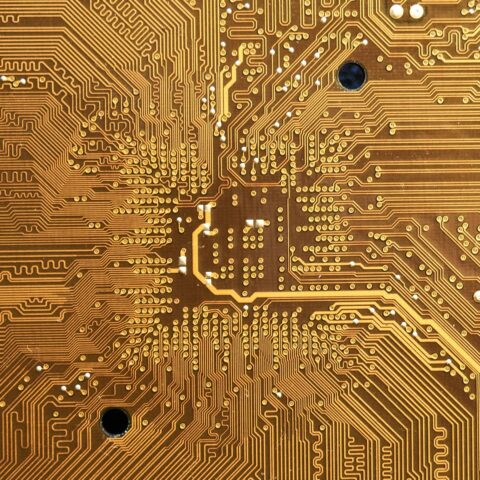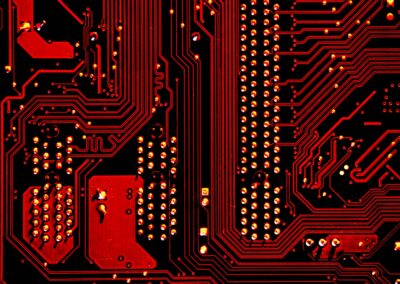Transforming IoT Data Handling with Apache Kafka
Introduction to Apache Kafka and Its Role in IoT
Using Apache Kafka for real-time data streams in IoT applications is revolutionizing how organizations manage and process vast amounts of data generated by IoT devices. In today’s connected world, the ability to handle data streams in real-time is critical for the success of IoT implementations across various sectors, including healthcare, smart cities, and industrial automation. Apache Kafka, an open-source distributed event streaming platform, provides the robust infrastructure needed to manage real-time data streams efficiently, ensuring that data is processed and analyzed instantly, without delays. In regions like Saudi Arabia and the UAE, where IoT adoption is accelerating, Apache Kafka is becoming a key technology for enhancing data processing capabilities.
Apache Kafka’s architecture is designed to handle large-scale data streams, making it ideal for IoT applications that require continuous data flow from numerous devices. The platform acts as a high-throughput, low-latency messaging system that can collect, store, and process data in real-time, enabling organizations to make quick decisions based on the latest information. This is particularly important in environments where real-time data processing is crucial, such as in smart city projects in Riyadh and Dubai, where instant data analysis can lead to better traffic management, energy efficiency, and public safety.
In addition to its real-time processing capabilities, Apache Kafka’s scalability makes it suitable for large IoT deployments. As the number of connected devices grows, so does the volume of data generated. Apache Kafka can scale horizontally to accommodate this growth, ensuring that data streams remain manageable and that processing speeds are maintained. This scalability is essential for future-proofing IoT infrastructure, particularly in rapidly developing regions like the Middle East, where IoT initiatives are expanding at an unprecedented pace.
Implementing Apache Kafka in IoT Infrastructure
Deploying Apache Kafka for real-time data streams in IoT infrastructure requires a well-planned strategy that considers both the technical and operational aspects of integration. One of the key challenges in IoT is managing the sheer volume of data generated by connected devices. Apache Kafka addresses this challenge by providing a platform that can ingest and process large data streams with minimal latency. This is achieved through its distributed architecture, which allows data to be partitioned and processed in parallel, significantly improving throughput and reducing the time it takes to analyze data.
In smart cities like Riyadh, where IoT sensors monitor everything from traffic to air quality, Apache Kafka can be used to stream data from these sensors to a central processing unit in real-time. The data can then be analyzed and used to make immediate adjustments to traffic signals, public transportation schedules, or environmental control systems, ensuring that the city operates smoothly and efficiently. By implementing Apache Kafka, city planners can create a responsive infrastructure that adapts to changing conditions in real-time, enhancing the quality of life for residents and visitors alike.
Moreover, Apache Kafka’s integration with other data processing tools, such as Apache Flink or Apache Spark, allows organizations to build a comprehensive IoT data pipeline that not only handles real-time data but also performs complex analytics and machine learning tasks. For example, in the UAE, where smart city initiatives are a major focus, combining Apache Kafka with these tools can enable predictive analytics, helping to foresee and mitigate potential issues before they occur. This proactive approach to data management is essential for maintaining the reliability and effectiveness of IoT systems in dynamic environments.
Challenges and Best Practices in Kafka Implementation
While the benefits of using Apache Kafka for real-time data streams in IoT are significant, there are challenges that organizations must address to ensure successful implementation. One of the primary challenges is ensuring the reliability and consistency of data streams, particularly in environments with fluctuating network conditions. To mitigate this risk, organizations can implement fault-tolerance mechanisms within Kafka, such as replication and partitioning strategies, which ensure that data is not lost in the event of a network failure or system crash.
Security is another critical consideration when implementing Apache Kafka in IoT environments. Given the sensitive nature of the data processed in many IoT applications, it is essential to secure data streams against unauthorized access and tampering. This can be achieved by encrypting data both at rest and in transit, as well as by implementing strong access control policies. In regions like Saudi Arabia and the UAE, where data privacy regulations are stringent, adhering to these security best practices is not only a technical requirement but also a legal obligation.
Finally, organizations should invest in proper training and knowledge transfer to ensure that their teams are fully equipped to manage and operate Kafka-based systems. This includes understanding Kafka’s architecture, configuring and tuning Kafka clusters for optimal performance, and integrating Kafka with other data processing tools. By building in-house expertise, organizations can maximize the benefits of Apache Kafka and ensure the long-term success of their IoT initiatives.
Maximizing the Benefits of Apache Kafka in IoT Applications
Case Studies: Apache Kafka in Action
The practical application of Apache Kafka for real-time data streams in IoT can be seen in several successful deployments across various industries. In the healthcare sector, for instance, a leading hospital in Dubai implemented Apache Kafka to manage real-time patient monitoring data. By streaming vital signs and other critical data directly to healthcare providers, the hospital was able to improve patient outcomes by enabling faster diagnosis and intervention. The low-latency capabilities of Kafka ensured that data was delivered in real-time, allowing medical staff to respond promptly to any changes in a patient’s condition.
In Saudi Arabia, an oil and gas company utilized Apache Kafka to monitor and control its extensive network of pipelines. By streaming data from sensors along the pipeline, the company could detect anomalies such as leaks or pressure drops in real-time. This enabled the company to take immediate action, preventing potential environmental disasters and minimizing operational downtime. The success of this project highlights the value of Apache Kafka in industries where real-time data processing is not just beneficial but essential for safety and efficiency.
These case studies demonstrate the transformative impact that Apache Kafka can have on IoT applications. By enabling real-time data processing, Kafka empowers organizations to make informed decisions quickly, improving operational efficiency and responsiveness. As more industries in Saudi Arabia, the UAE, and beyond continue to adopt IoT technologies, the role of Apache Kafka as a critical infrastructure component will only grow.
Future Trends and Considerations
As the adoption of Apache Kafka for real-time data streams in IoT continues to expand, several key trends are emerging that will shape the future of this technology. One significant trend is the increasing integration of Apache Kafka with cloud-based services. By leveraging the scalability and flexibility of cloud platforms, organizations can extend their Kafka deployments across multiple regions, ensuring that real-time data processing is available wherever it is needed. This is particularly relevant in the Middle East, where the geographic distribution of data centers is a key consideration for IoT projects.
Another important trend is the convergence of Kafka with artificial intelligence (AI) and machine learning (ML) technologies. By integrating AI and ML models with Kafka data streams, organizations can perform real-time analytics and make predictive decisions, further enhancing the capabilities of their IoT systems. For example, in smart cities like Riyadh, AI-driven traffic management systems could use Kafka data streams to predict and alleviate congestion before it becomes a problem, improving overall traffic flow and reducing travel times.
Looking ahead, the continued focus on data privacy and security will remain a top priority as organizations expand their use of Apache Kafka in IoT applications. Ensuring that data streams are secure and compliant with regional regulations will be essential for maintaining trust and avoiding potential legal challenges. By staying ahead of these trends and embracing the full potential of Apache Kafka, organizations can unlock new levels of efficiency, innovation, and success in their IoT endeavors.
Conclusion: The Strategic Impact of Apache Kafka on IoT
Apache Kafka for real-time data streams in IoT applications offers a powerful solution for organizations looking to enhance their data processing capabilities. By providing a scalable, low-latency platform for managing continuous data flows, Kafka enables organizations to make faster, more informed decisions, ultimately leading to better outcomes. Whether in healthcare, smart cities, or industrial automation, the ability to process data in real-time is critical for success, and Apache Kafka is uniquely positioned to meet this need.
For business executives and technology leaders in Saudi Arabia, the UAE, and beyond, investing in Apache Kafka is a strategic move that can drive innovation and operational excellence. By adopting this technology, organizations can stay ahead of the competition, deliver enhanced services, and achieve greater success in the rapidly evolving IoT landscape.
—
#ApacheKafka #IoT #RealTimeData #SmartCities #AIinIoT #UAEInnovation #SaudiArabiaTechnology #RiyadhSmartTech #DubaiIoT #DataProcessing































